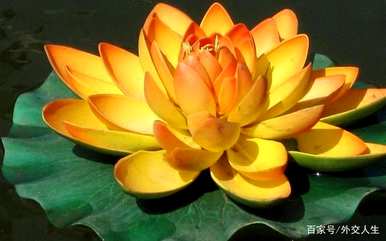莲花-印度国花

又称“莲花” Kamal ka Phool是印度的国花,莲花被称为圣花,在古代艺术和神话中占有独特的地位,在印度文化中被尊为吉祥的象征。在印度教和神话中,描述了负责学习的人 Saraswathi女神,就是端坐在莲花上。莲花不仅仅是一种花,它代表着美与超脱。俗话说,莲花虽然生长在土壤中,但闻起来却没有药的味道。
莲花生长在清澈的池塘、湖泊和半热带气候中。当它开花时,花瓣一个接一个地展开,直到阳光亲吻花朵。这是多么美妙啊!在文学中,尤其是印度文学作品中,有无数的诗歌赞美莲花和太阳之间的爱。莲花有多种颜色,包括白色、红色、蓝色、粉末和紫色。莲花可以在许多亚洲家庭中找到。
莲花可食用,具有多种药用功能。很久以前,莲花被用于传统的亚洲医学。它有着悠久的历史。莲花可以泡莲花茶,缓解心脏病症状,止血。莲花的根可以帮助身体去除有害毒素,增强肝功能。它还具有清热的作用。莲花的根和茎有助于治疗天花、喉咙并发症、皮肤色素沉着和腹泻。
煮莲花对胃和生殖器官有保健作用。还能收缩血管,防止血液流失过多,如咳血、便血等症状。茎有利于胎儿的发育,也可用于治疗胸闷。莲花籽可用于调理脾肾;当然,它可以直接用作配料。大多数情况下,莲花汤都是用莲花籽煮的,大的莲花叶可以作为凉席来缓解高烧和夏季炎热。莲花叶也用于其他日常生活中,比如用荷花叶包裹的东西,可以长期保持原有的香味。
莲花向人类传达了一种意义。虽然莲花代表美,但它是超脱的象征。虽然莲花根扎在泥里,但还是可以浮在水上,干净,不沾泥水。莲花的品质也向人们展示了人们在世界上应有的存在方式,即努力工作,但他们并不执着于事务和周围环境。薄伽梵歌说:“谁能不执着地履行自己的职责,把所有的结果都交给至高无上的主人,就像不沾水的荷叶一样,不会受到犯罪的影响。”
正是因为莲花的高尚意义和文化意义, 只有这样,现代印度的开国之父才能将莲花视为国花,并将其载入宪法。
LOTUS-NATIONAL FLOWER OF INDIA
The Lotus, also known as" Kamal ka Phool” is the national flower of India. Lotus is a sacred flower and occupies a unique position in the art and mythology of ancient India and has been an auspicious symbol of Indian culture. Hindu religion and mythology portray goddess Saraswathi, the muse of learning, as being seated on a lotus flower. The lotus is more than a flower —it represents both beauty and non-attachment. There is a saying that although it grows in mud. it smells of myrrh.
The lotus grows in fresh water ponds and lakes and in semitropical climates. It blossoms gradually and magnificently -one petal at a time and reaches full bloom when the rays of the sun kiss the flower. There are innumerable poems praising the love between the sun and the flower in literature in general and Indian literature in particular. The lotus is found in different colours, namely, white,red, blue, pink, and purple and is found in many Asian countries.
The lotus is edible and has many curative properties: its use in traditional Asian medicine is as old as history. The flower is used to brew lotus teas, which relieves cardiac complications and helps to stop bleeding. The roots of the plant help in getting rid of the body's toxic wastes and in strengthening the lives: it also helps in reducing body heat. The roots and rhizomes are useful in treating small pox, throat complications, pigmentation problems in skin, and diarrhoea.
The cooked lotus root is good for the stomach and the reproductive organs. It also helps to contract the blood vessels and prevents blood loss and complications such as coughing blood and blood in stools. The stem helps in the healthy growth of the foetus and also used to treat tightness of the chest. The lotus seed is used to tone the spleen and the kidney and is also used as food. Soups are also made from the seeds. The large leaves are used as cold bed sheets to treat high fever and for the treatment of summer heat and further they are used to things. The things that are thus wrapped remain fragrant for a long time.
Lotus has a message to convey to humans. Although, lotus is an archetype of beauty. it symbolises non-attachment.Even though the lotus is rooted in mud. it continues to float on the water without becoming wet or muddy.
This aspect of the lotus dictates how humans ought to live in this world —work incessantly but be not attached to the work and to the surroundings. The Bhagavad Gita says, "One who performs his duty without attachment, surrendering the results onto the Supreme Lord, is unaffected by sinful action, as the lotus leaf is untouched by water.” It is because of these noble meanings
and cultural significance that made the founding fathers of modern India enshrine the lotus in our constitution as the national flower.

[tag]花卉知识[end]
花卉知识